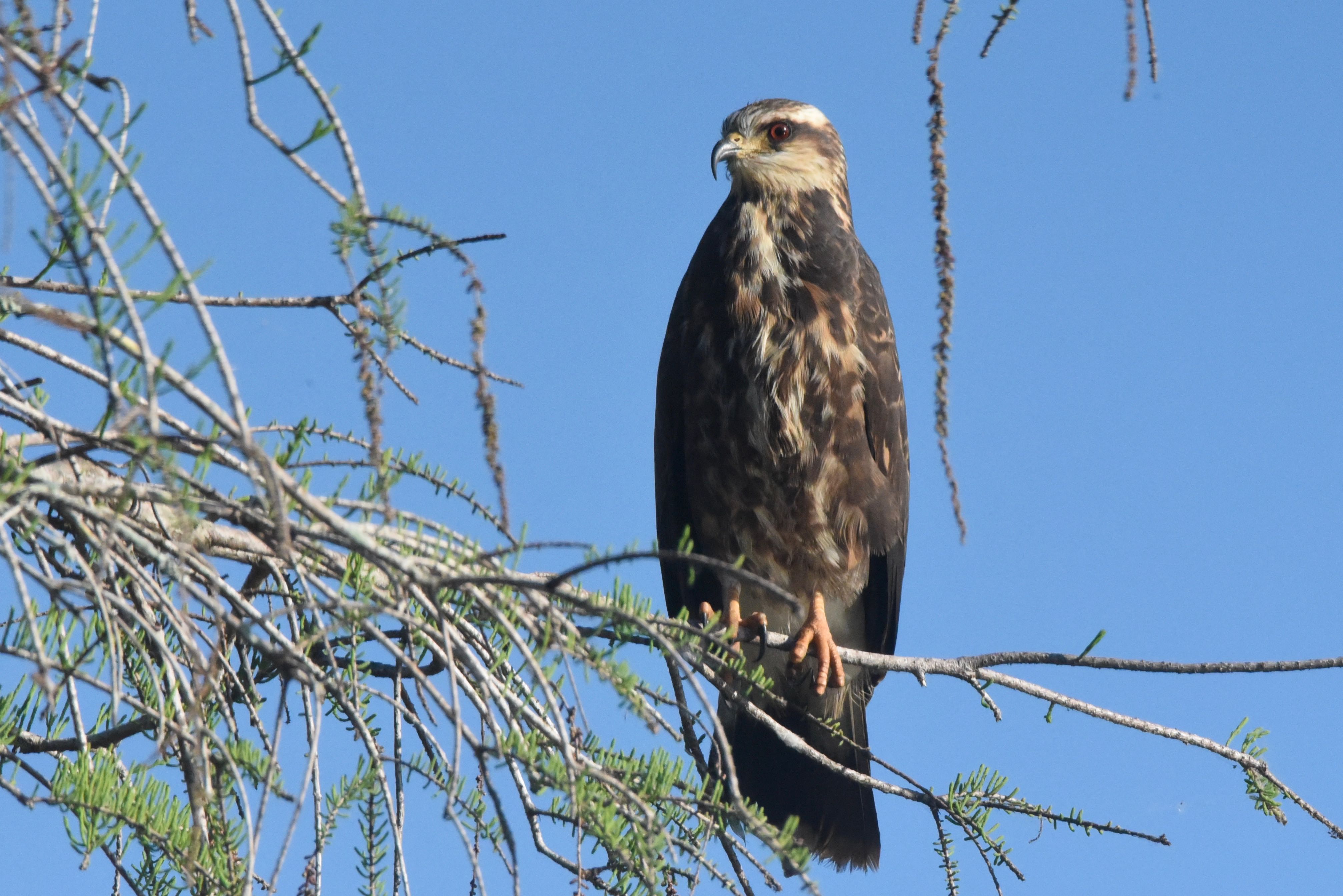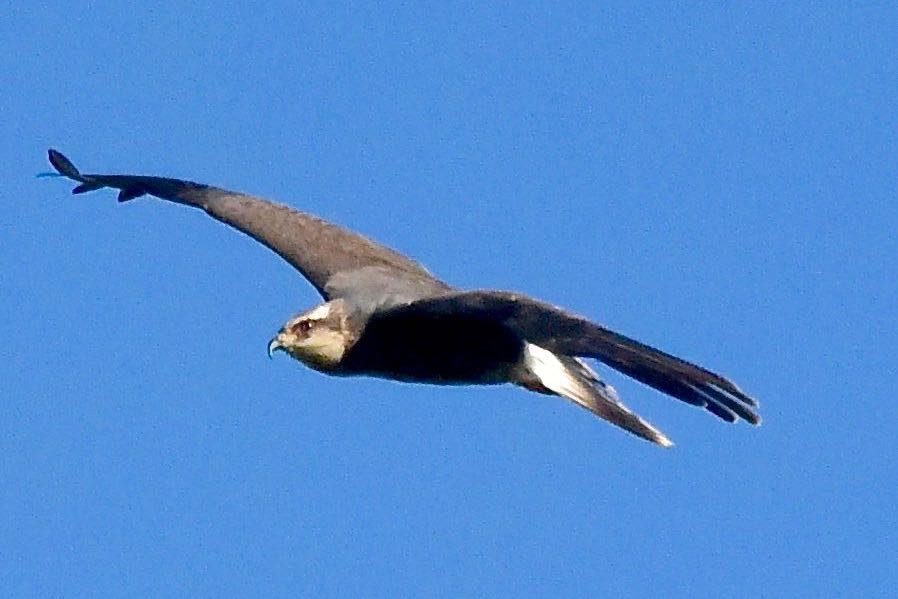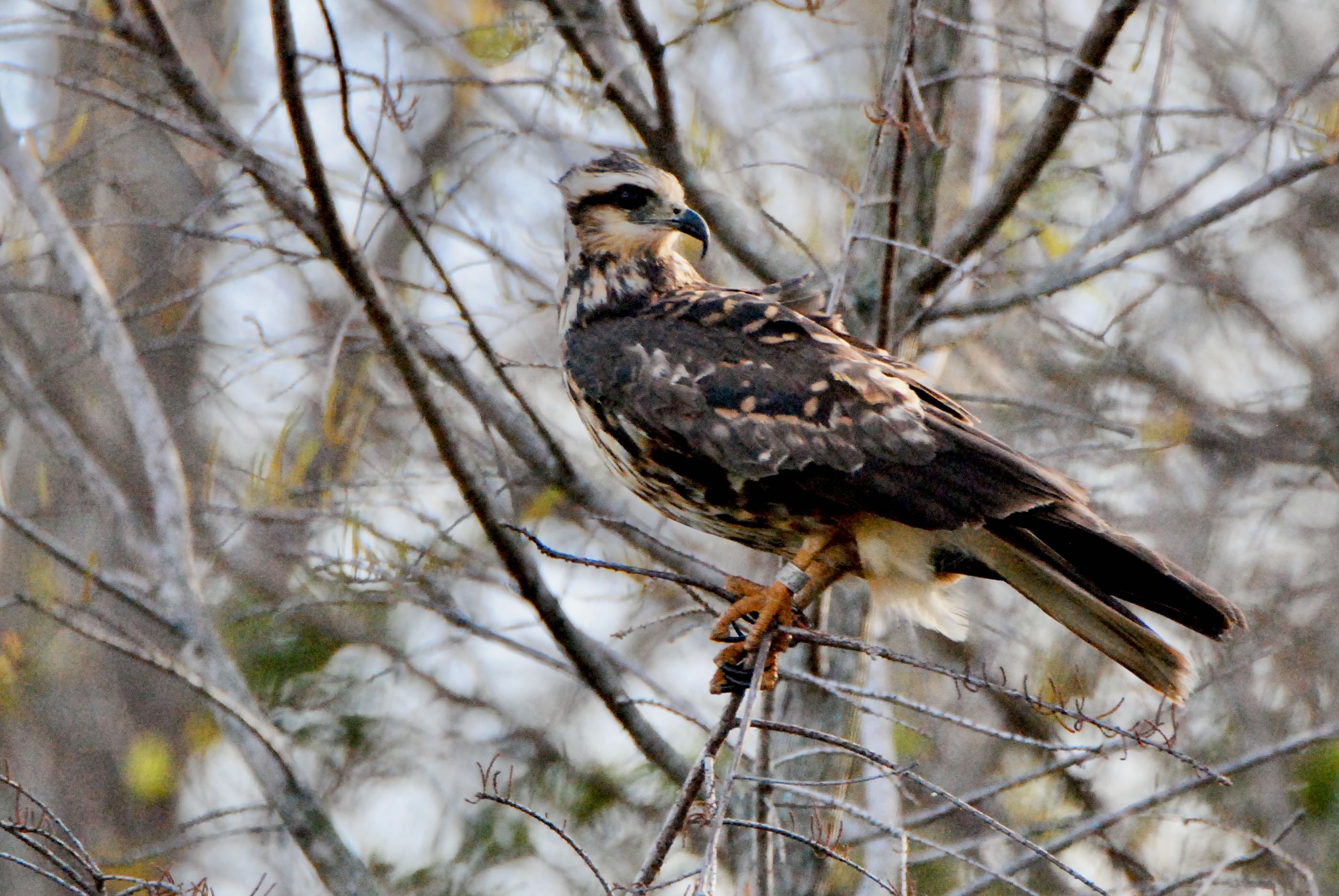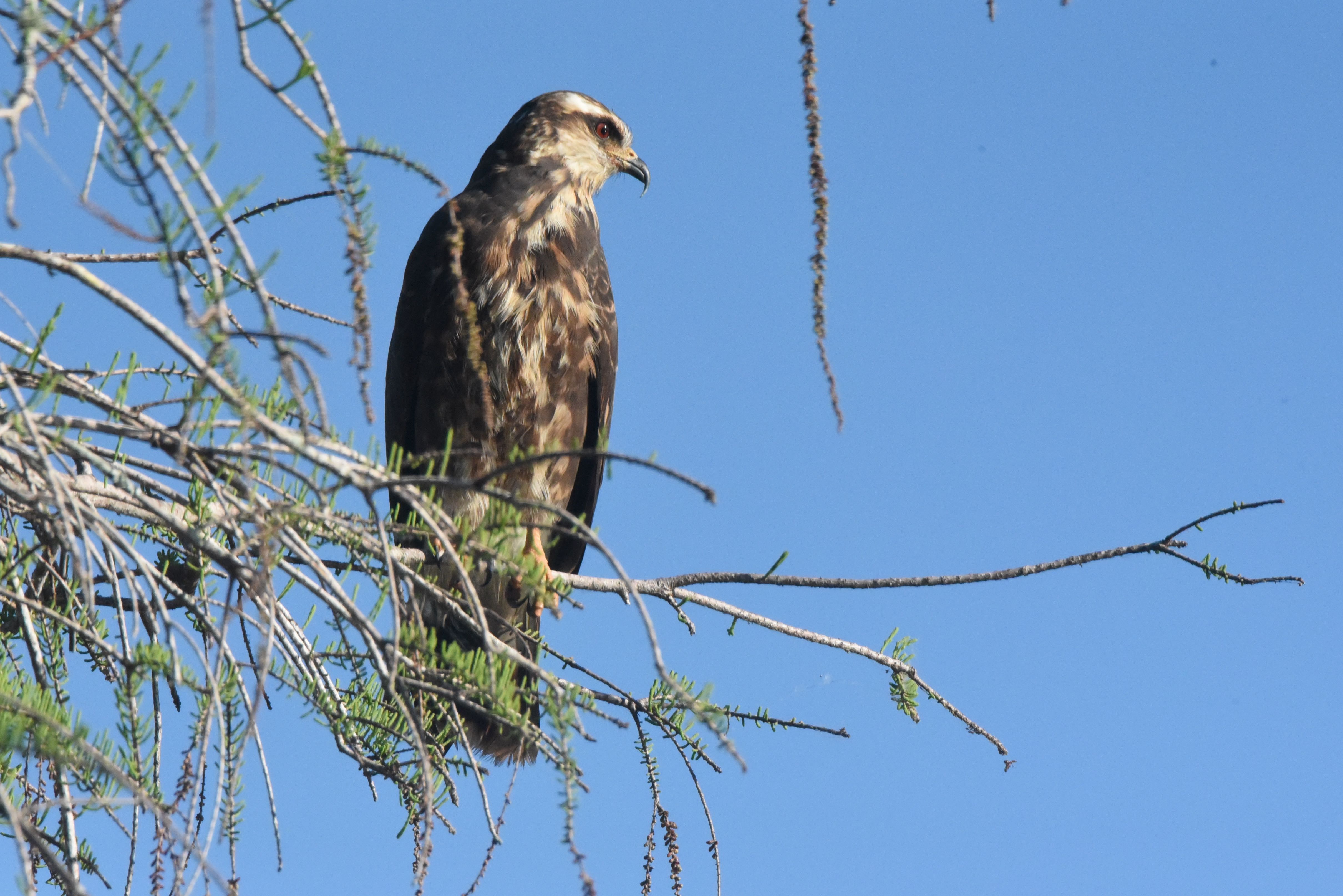
Snail kite, photographed at Loxahatchee National Wildlife Refuge, Boynton Beach, Palm Beach County, in March 2019.
There might not be a pickier eater than this bird, the snail kite, Rostrhamus sociabilis. Not only does it specialize in eating escargot, it almost exclusively eats one species of escargot, the apple snail, Pomacea paludosa.
Apple snail for breakfast. Apple snail for lunch. Apple snail for dinner. All apple snail. All the time. Well, almost all the time. Which, before the days of Napoleon Broward and the Corps of Engineers, was no problem. However South Florida's screwed up hydrology and polluted waters have made life difficult for the apple snail and by extension the snail kite. The snail kite is listed as endangered, but globally, snail kites are secure.
The snail kite is only found in Florida among the 50 states, but its range extends through the Caribbean, Central America and into South America to Argentina. In Florida, snail kites are found from the central part of the state south through the Everglades. Birds found in Florida and Cuba, formerly called the Everglades snail kite, are considered a subspecies, Plumbeus.
It is a dimorphic critter, meaning males and females have different looks. Males are slate gray with red legs that become deeper red in breeding season. Females are streaks of browns and creams. Both sexes have and broad a white band at the base of the tail visible when in flight, and a slender, deeply curved bill designed to liberate apple snails from their shells. They will eat other snails, but their bill is so specialized to the apple snail that some wonder whether snail kites can efficiently extract the meat. They've been seen occasionally eating fish, turtles and crayfish.
Snail kite habitat is freshwater marshes and shallow edges of lakes where apple snails can be found. Marshes have to be underwater most of the time in order to sustain apple snails, and have to be relatively clear of vegetation so kites can spot them. Efforts to drain the Everglades diminished suitable apple snail habitat. Agricultural runoff and sewage discharge from urban areas caused dense plant growth. The snail kite population is small but considered stable; they will move from area to area in search of food, and the strategy for preserving the bird is focused on preserving key habitat from about Lake Kissimmee south into the Everglades.
Some snail kite basics: They are medium-sized raptors, as long as 16 inches and a wingspan approaching 46 inches. They are about the same size as northern harriers and are often misidentified as such in the field. Breeding season for Florida birds is December through August. Males begin nest-building before mating; they court females by bringing her nesting material or food. The nest itself is made of sticks woven together with other plant matter, with vegetation lining the inside. Females lay one to five eggs, typically three. Incubation takes as long as a month, with both parents handling sitting duties. Offspring fledge in about five weeks; parents continue to feed them for five or six more weeks before they're on their own. In good years, one mate might abandon the nest, leaving the rearing to the other. A pair also might attempt to have a second brood.
Snail kites are members of Accipitridae, the family of hawks and eagles.
Click on photo for larger image
Links for Snail Kite



